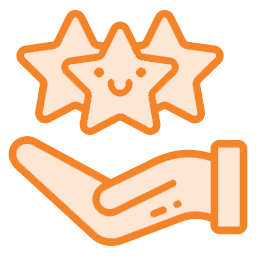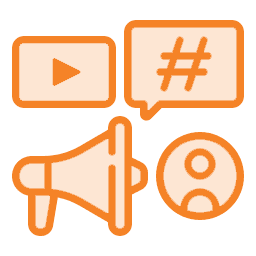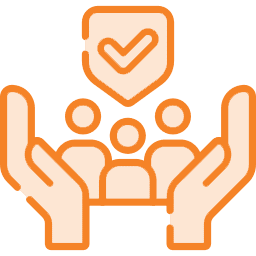Sales teams today use technology to streamline workflows, reduce manual tasks, and improve conversion rates. However, there’s often confusion between sales automation and AI-powered sales tools.
Many businesses assume AI is just a more advanced version of automation, but the reality is different:
- Sales automation follows rule-based workflows to complete repetitive tasks.
- AI in sales uses machine learning to analyze data, predict outcomes, and make smart decisions.
What You’ll Learn in This Guide:
Key differences between sales automation and AI
When to use each one (or both) for your sales team
How automation and AI work together to improve efficiency
What Is Sales Automation?
Entity: Sales Automation Software
Sales automation refers to technology that follows predefined rules to execute repetitive sales tasks automatically. These tools reduce manual work, improve efficiency, and ensure consistent outreach.
Key Functions of Sales Automation:
Automated follow-ups & email sequences – Tools like HubSpot Sequences and Outreach.io schedule and send emails without manual input.
CRM updates & data entry – Salesforce Workflows log interactions and update contact details automatically.
Meeting scheduling – Tools like Calendly and Chili Piper eliminate back-and-forth emails for appointment booking.
Task reminders & pipeline tracking – Sales automation ensures no lead falls through the cracks.
Best For:
Repetitive sales tasks that don’t require decision-making
Ensuring consistency in lead follow-ups and outreach
Small and mid-sized sales teams handling outbound leads
What Is Artificial Intelligence in Sales?
Entity: AI in B2B Sales
AI in sales goes beyond automation by using machine learning, natural language processing (NLP), and predictive analytics to analyze data, prioritize leads, and personalize sales interactions.
Key Functions of AI in Sales:
Lead Scoring & Prioritization – AI ranks leads based on behavior, engagement, and historical data.
Predictive Sales Forecasting – AI tools like Salesforce Einstein analyze past deals to predict revenue trends.
AI Chatbots & Virtual Assistants – Platforms like Drift and Apollo AI engage leads and qualify prospects.
Conversation Intelligence & Coaching – AI-driven tools like Gong and Chorus analyze sales calls to improve team performance.
Best For:
Data-driven sales teams that need smarter lead targeting
Sales organizations that want to personalize outreach at scale
B2B SaaS and enterprise sales teams handling large lead volumes
Sales Automation vs. AI: Key Differences Explained
Side-by-Side Comparison:
|
Feature |
Sales Automation |
AI in Sales |
|
Function |
Follows predefined rules |
Learns and adapts over time |
|
Data Processing |
Basic CRM updates |
Analyzes patterns & predicts behavior |
|
Decision-Making |
No – executes tasks |
Yes – makes smart recommendations |
|
Use Case |
Automating repetitive tasks |
Personalization & intelligent lead prioritization |
|
Example |
Automated follow-ups |
AI-powered lead scoring |
Key Takeaway: Sales automation is about efficiency, while AI focuses on intelligence and personalization.
When Should You Use Sales Automation?
Best for Sales Teams That Need:
Consistency in outreach and follow-ups
Automated reminders and CRM updates
Scalability without additional hiring
Example Use Case:
A small business managing outbound sales manually can use Outreach.io to automate follow-ups, ensuring no lead is left behind.
When Should You Use AI in Sales?
Best for Sales Teams That Need:
Predictive insights on lead quality and conversion probability
AI-driven personalization for cold outreach and email sequences
Real-time conversation analysis and coaching
Example Use Case:
A B2B SaaS company scaling lead generation can use Apollo AI to identify high-potential prospects based on past buyer behavior.

Can Sales Automation and AI Work Together?
They’re Complementary, Not Competing:
Sales automation handles repetitive tasks – e.g., email follow-ups and meeting scheduling.
AI makes smarter decisions – e.g., predicting which leads are most likely to convert.
Hybrid Workflow Example:
Automated email sequences send outreach emails.
AI lead scoring prioritizes high-intent prospects.
Automated follow-ups nurture leads.
AI-driven recommendations suggest the best time and method for contact.
How to Choose the Right Fit for Your Sales Team
Key Factors to Consider:
Team Size: Small teams benefit from automation; larger teams need AI-driven insights.
Lead Volume: AI helps prioritize leads at scale, while automation ensures follow-ups.
Tech Stack Integration: Ensure your CRM and tools work together.
Budget: AI tools often cost more but provide deeper insights.
Decision Matrix:
|
Factor |
Sales Automation |
AI in Sales |
|
Small teams |
Best choice |
Not essential |
|
Enterprise sales |
Useful |
Essential |
|
Budget-friendly |
Lower cost |
More expensive |
|
Personalization |
Limited |
AI-driven personalization |
|
Lead prioritization |
Basic rules |
Predictive analytics |
Final Takeaway: Start with automation for efficiency, and scale with AI for smarter sales decisions.
FAQs: Sales Automation vs. AI in Sales
Sales automation follows rule-based workflows, while AI analyzes data to make smart decisions and adapt over time.
Not necessarily—automation improves efficiency, while AI enhances intelligence and personalization. The best strategy often combines both.
Yes! Affordable AI-powered tools are available, but most small teams start with automation and scale with AI as they grow.
No! Most modern tools like HubSpot, Drift, and Apollo are no-code or low-code, making them accessible for non-technical users.





